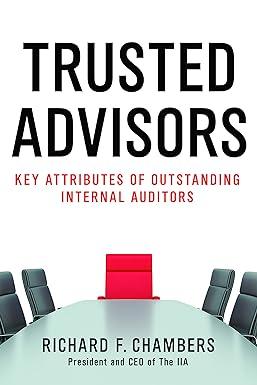Question
Problem 1: Suppose you have the following Balance Sheet Data Assets 2016 2017 Liabilities 2016 2017 Current Assets Current Liabilities Cash 14 10 Accounts Payable
| Problem 1: Suppose you have the following Balance Sheet Data | |||||||||||
| Assets | 2016 | 2017 | Liabilities | 2016 | 2017 | ||||||
| Current Assets | Current Liabilities | ||||||||||
| Cash | 14 | 10 | Accounts Payable | 50 | 45 | ||||||
| Accounts receivable | 60 | 22 | ST Debt and Notes Payable | 40 | 37 | ||||||
| inventories | 50 | 70 | |||||||||
| Total Current Assets | 124 | 102 | Total Current Liabilities | 90 | 82 | ||||||
| Long Term Assets | Long Term Liabilities | ||||||||||
| Net PPE | 250 | 290 | Long Term Debt | 130 | 160 | ||||||
| Total Long Term assets | 250 | 290 | Total Long Term Liabilities | 130 | 160 | ||||||
| Total Liabilities | 220 | 242 | |||||||||
| Stockholders Equity | |||||||||||
| Common Stock | 10 | 10 | |||||||||
| Paid In Surplus (Capital) | 110 | 110 | |||||||||
| Retained Earnings | 34 | 30 | |||||||||
| Total Shareholders Equity | 154 | 150 | |||||||||
| Total Assets | 374 | 392 | Total Liabilities and Shareholders Equity | 374 | 392 | ||||||
| What can we say is going on with this company by looking at the balance sheet? (Make sure to look at the dates to know which column is the most recent period!) | |
| Analyze the changes in each of the balance sheet tems and comment on what is occuring. | |
| Solution: | |
| Cash | |
| Accounts Receivable | |
| Inventories | |
| PPE | |
| Accounts Payable | |
| ST Debt & Notes Payable | |
| LT Debt | |
| Common Stock and Paid in Capital | |
| Retained Earnings | |
| calculate liquidity ratios for 2017: | ||||||
| 2016 | 2017 | Comment on Ratios | ||||
| Current Ratio | 1.38 | |||||
| Quick Ratio | 0.82 | |||||
| Cash Ratio | 0.16 | |||||
| calculate some leverage ratios for 2017: | Comment on Ratios | |||||
| 2016 | 2017 | |||||
| Book Debt to Equity | 1.10 | |||||
| Book Debt to Capital | 0.52 | |||||
| Equity Multiplier | 2.43 | |||||
| Problem 2 - Use of Ratios to Make Other Calculations |
| ||||||||||
|
| |||||||||||
| You have a company that currently has a market capitalization of $4.6 billion |
| ||||||||||
|
| |||||||||||
| It has a market to book ratio of 3 and a book debt to equity ratio of 6. |
| ||||||||||
|
| |||||||||||
| If cash is $1.1 billion, what is the company's enterprise value? |
| ||||||||||
|
| |||||||||||
| Solution: |
| ||||||||||
| Discussion of the Dupont Formula | |||||||||||
| The Dupont Formula is a way of disaggregating the components of ROE | |||||||||||
| ROE = Net Margin X Asset Turnover X Equity Multiplier | |||||||||||
| We know by definition, ROE = Net Income / Book Equity | |||||||||||
| Dupont shows us: | |||||||||||
| ROE = | Net Income / | Times | Sales/ | Times | Assets/ | ||||||
| Sales | Assets | Equity | |||||||||
| We also know by definition, ROA = Net Income / Assets |
| ||||||||||||||
|
| |||||||||||||||
| Dupont shows us: |
| ||||||||||||||
| ROA = | Net Income/ | Times | Sales/ |
| |||||||||||
| Sales | Assets |
| |||||||||||||
|
| |||||||||||||||
| Problem 3: Consider the following information - |
| ||||||||||||||
|
| |||||||||||||||
| Suppose we use the data from Kroger and Whole Foods: |
| ||||||||||||||
| KR - TTM | WFM - TTM |
| |||||||||||||
|
| |||||||||||||||
| Net Profit Margin | 1.34% | 2.44% |
| ||||||||||||
| Total Asset Turnover | 3.36 | 2.46 |
| ||||||||||||
| Equity Multiplier | 5.83 | 1.91 |
| ||||||||||||
| Calculate Kroger and Whole Foods ROE and ROA from the data given. We know that ROE = net income / book equity and ROA = net income / total assets; while none of those components are given, we have ratios that can solve the problem! | |||||||||||||||
| Question? What would WFM's total asset turnover need to be for it to have the same ROE as Kroger? | |||||||||||||||
Step by Step Solution
There are 3 Steps involved in it
Step: 1

Get Instant Access to Expert-Tailored Solutions
See step-by-step solutions with expert insights and AI powered tools for academic success
Step: 2

Step: 3

Ace Your Homework with AI
Get the answers you need in no time with our AI-driven, step-by-step assistance
Get Started


